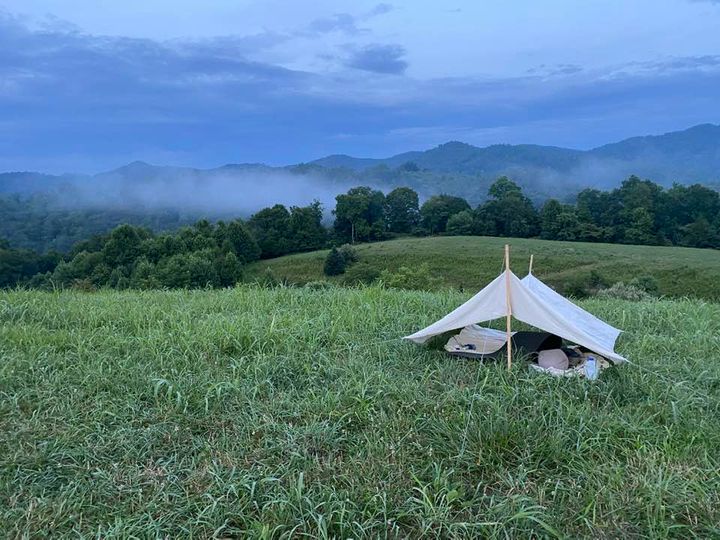How Nature Recalibrates the Brain and Restores True Rest
Modern humans are some of the most sleep-deprived mammals on Earth, not necessarily in hours, but in depth and quality. Artificial light, synthetic materials, indoor air, and digital overstimulation pull our brain waves toward constant beta frequency — the busy, alert state of problem-solving and screen-scanning.
When we step back into nature, the entire neurophysiology begins to re-tune itself.
1. The Return to Natural Brain Rhythms
In natural conditions — away from Wi-Fi, LED lights, and city hum — the brain’s electromagnetic field begins to synchronize with the Schumann resonance, the Earth’s own background frequency (~7.83 Hz).
That frequency corresponds closely to theta brain waves, the same state we enter during:
- light sleep,
- meditation,
- deep creative flow.
This resonance acts like a tuning fork for the nervous system — easing the transition from wakefulness to rest. As a result, it becomes easier for the brain to descend smoothly from alpha (relaxed wakefulness) to theta (light sleep) to delta (deep sleep).
2. Darkness and Firelight: The Circadian Compass
Before electricity, humans oriented their rest around the natural light cycle:
- Sunset: Light fades to amber firelight, triggering melatonin release.
- Midnight: The body reaches its deepest temperature drop — ideal for delta sleep.
- Dawn: Blue light signals cortisol awakening response, bringing alertness and clarity.
When you sleep outdoors on the ground — in your backyard, in the wilderness or at a campground — your body re-learns this rhythm almost instantly. Even one night of camping can reset melatonin timing by several hours, according to chronobiology studies.
Firelight and starlight emit low, red frequencies that do not suppress melatonin the way LEDs do. They allow the brain to drift naturally toward slower rhythms without chemical interference.
3. Natural Materials and Electromagnetic Calm
Your sleeping environment directly influences your electrical and thermal equilibrium.
- Wool, cotton, linen, silk — these natural fibers are semi-conductive and allow your body’s bioelectric field to ground into the Earth more easily.
- Synthetics (polyester, nylon, etc.) build up static charge and can subtly agitate the nervous system, interfering with deep delta waves. Studies show the heartbeat increases by as much as 20 beats per minute when compared to wool materials.
- Grounding (sleeping in contact with earth, wood, or natural fibers) helps reduce cortisol and synchronize heart-rate variability — a sign of parasympathetic dominance and true rest.
This is part of why your Lucky Sheep wool sleeping bag or a wool bed system feels different — not just thermally, but energetically. Wool’s hygroscopic and breathable nature stabilizes microclimate humidity and temperature, allowing the body to adapt into the “rest-and-repair” zone and stay there all night even as temperatures shift outside.
4. Temperature, Breath, and the Primal Brain
Deep sleep is triggered when core body temperature drops slightly.
In the wild, this happens naturally with the cooling of night air and the breath of wind.
Our ancient brain interprets this cooling as the cue to enter metabolic slowdown and delta wave sleep.
Indoors, with constant temperature, HVAC air, and synthetic bedding, that subtle cooling signal is often muted — one reason so many people never reach true deep sleep.
5. The Ideal Rewilded Sleep Rhythm
If we combine all these insights, the optimal rewilded sleep cycle looks like this:
| Time | Environment | Brain Waves | Function |
| Sunset–9:30 PM | Firelight, no screens | Alpha → Theta | Melatonin rise, wind-down |
| 10 PM–2 AM | Cool, dark, silent | Delta | Physical repair, growth hormone release |
| 2–5 AM | Deep stillness | Theta → REM | Emotional healing, dreaming |
| 5–6:30 AM | Dawn light | Alpha | Wake gently, integration of dreams |
Sleeping outdoors or near an open window allows ambient temperature shifts, natural sounds, and Earth’s frequency to guide the body through this pattern effortlessly — no supplements or sleep trackers needed.
The Essence of Rewilded Rest
Rewilded sleep isn’t just about more hours.
It’s about resonance — restoring harmony between:
- Brain and Earth’s electromagnetic field
- Body temperature and ambient cycles
- Light exposure and circadian rhythm
- Materials and biology
When those align, you don’t “fall asleep” — you return home–or homeostasis–to the ancient rhythm of the living planet.

